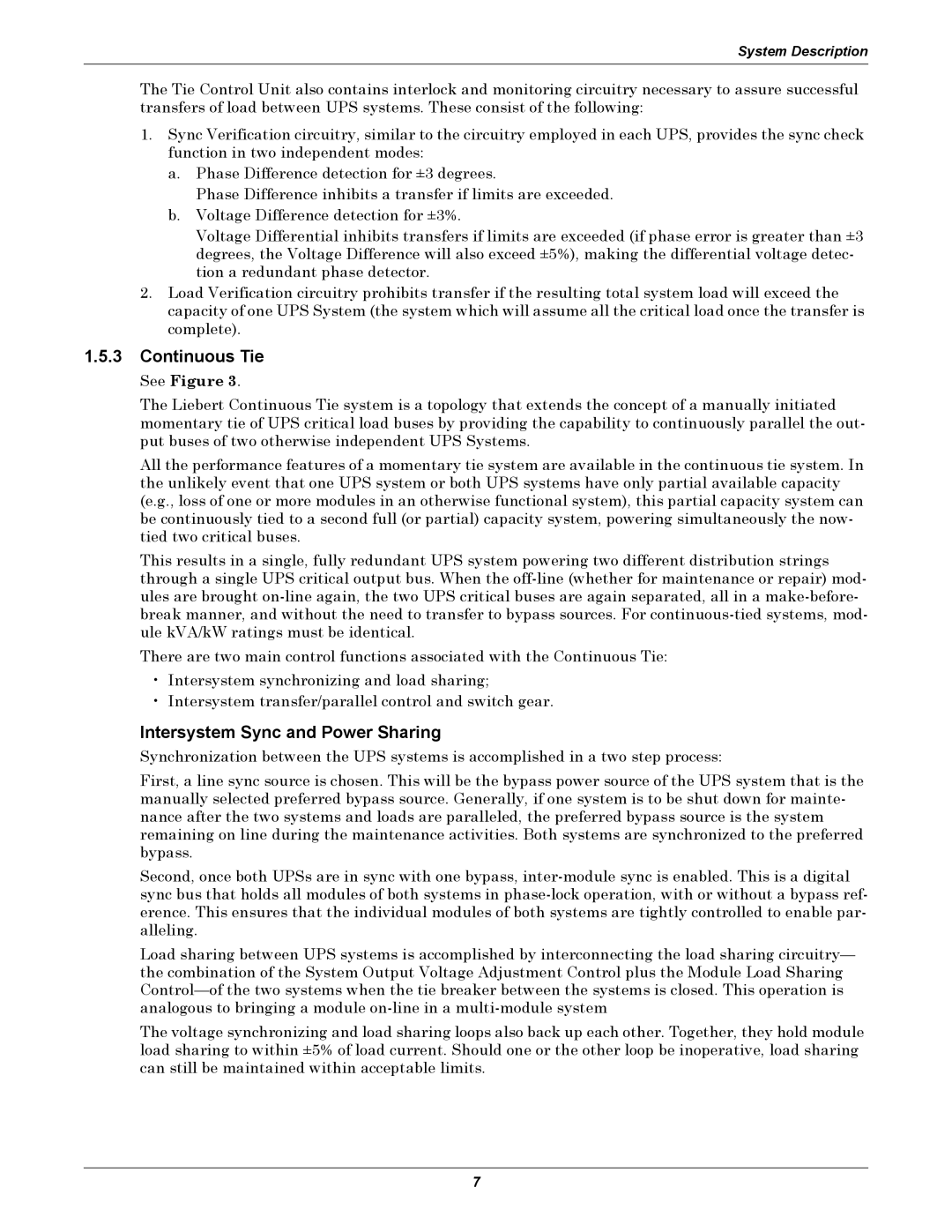
System Description
The Tie Control Unit also contains interlock and monitoring circuitry necessary to assure successful transfers of load between UPS systems. These consist of the following:
1.Sync Verification circuitry, similar to the circuitry employed in each UPS, provides the sync check function in two independent modes:
a.Phase Difference detection for ±3 degrees.
Phase Difference inhibits a transfer if limits are exceeded.
b.Voltage Difference detection for ±3%.
Voltage Differential inhibits transfers if limits are exceeded (if phase error is greater than ±3 degrees, the Voltage Difference will also exceed ±5%), making the differential voltage detec- tion a redundant phase detector.
2.Load Verification circuitry prohibits transfer if the resulting total system load will exceed the capacity of one UPS System (the system which will assume all the critical load once the transfer is complete).
1.5.3Continuous Tie
See Figure 3.
The Liebert Continuous Tie system is a topology that extends the concept of a manually initiated momentary tie of UPS critical load buses by providing the capability to continuously parallel the out- put buses of two otherwise independent UPS Systems.
All the performance features of a momentary tie system are available in the continuous tie system. In the unlikely event that one UPS system or both UPS systems have only partial available capacity (e.g., loss of one or more modules in an otherwise functional system), this partial capacity system can be continuously tied to a second full (or partial) capacity system, powering simultaneously the now- tied two critical buses.
This results in a single, fully redundant UPS system powering two different distribution strings through a single UPS critical output bus. When the
There are two main control functions associated with the Continuous Tie:
•Intersystem synchronizing and load sharing;
•Intersystem transfer/parallel control and switch gear.
Intersystem Sync and Power Sharing
Synchronization between the UPS systems is accomplished in a two step process:
First, a line sync source is chosen. This will be the bypass power source of the UPS system that is the manually selected preferred bypass source. Generally, if one system is to be shut down for mainte- nance after the two systems and loads are paralleled, the preferred bypass source is the system remaining on line during the maintenance activities. Both systems are synchronized to the preferred bypass.
Second, once both UPSs are in sync with one bypass,
Load sharing between UPS systems is accomplished by interconnecting the load sharing circuitry— the combination of the System Output Voltage Adjustment Control plus the Module Load Sharing
The voltage synchronizing and load sharing loops also back up each other. Together, they hold module load sharing to within ±5% of load current. Should one or the other loop be inoperative, load sharing can still be maintained within acceptable limits.
7
